Are you looking to have a better understanding of what the differences are between different types of solder? Solder is an incredibly important tool for any kind of wiring and electronic project, but it can be hard to know which type is best for your particular situation. In this blog post, we’ll take a look at two popular choices: 63/37 and 60/40 solders. We’ll cover what distinguishes them from one another in terms of melting points, strength & durability, flux considerations and how they work with other materials. This should give you all the information you need when deciding which kind of solder to use on your next project!
What is Solder Made Of?
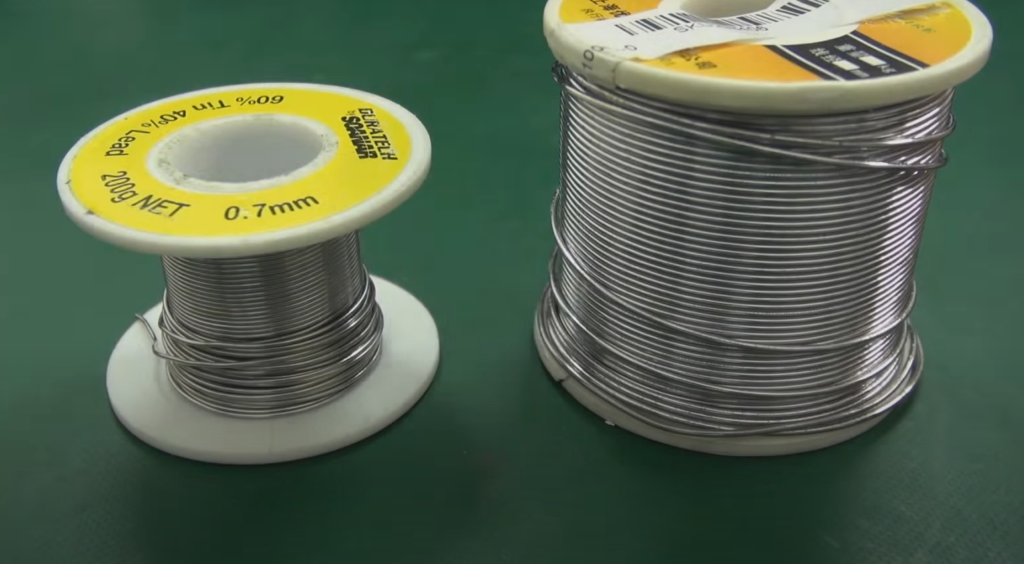
Tin acts as the flux, which helps to draw heat away from components and allow for more precise soldering. Lead creates a stronger bond between the joint and component being soldered together.
The melting point of both the 63/37 and 60/40 alloys are very close; however they differ slightly due to their different compositions. The melting point of the 63/37 alloy is within the range of 183-190°C (361-374°F), while the melting point of the 60/40 alloy falls between 190-196°C (374-385°F).
Every type of solder alloy comes with its own advantages and disadvantages. The 63/37 solder is the most popular choice among hobbyists because it flows easily at lower temperatures, making it easier to use with sensitive components. However, because of its lower melting point, this type of solder can also be more prone to oxidation or corrosion over time.
The 60/40 alloy has a higher melting point which allows for stronger bonds between parts that require a lot of heat to join them together. It may also have better longevity in electrical systems due to its resistance against corrosion. However, the higher melting point also makes the 60/40 alloy harder to work with as it requires significantly more heat than the 63/37 solders. [1]
Types of Solders
The two primary types of solders are 63/37 and 60/40. The numbers refer to the alloy composition, where the first number is lead content and the second is tin content.
63/37 Solder is composed of 63% lead and 37% tin, which creates a strong bond for components at temperatures between 183-190°C (361-374°F). This solder melts quickly when heated with a soldering iron, making it an ideal choice for electrical work. Unfortunately, due to its high lead content, it is not environmentally friendly and should not be used in projects that will come into contact with food or water.
60/40 Solder contains 40% lead and 60% tin. It has a lower melting point of 190-196°C (374-385°F), making it easier to work with than 63/37 solder. Its low lead content also makes it an environmentally friendly alternative, as it is less hazardous than its counterpart. However, due to the lower lead content, this type of solder does not have the same strength when bonding components.
What is 60/40 Solder?
A metallic alloy called 60/40 solder is frequently used in electrical connections. It consists of 60% tin and 40% lead, hence the name. The combination creates an alloy that has a higher melting point than pure lead, making it excellent for use in any application where a strong connection between two pieces of metal is needed. Additionally, its low cost and wide availability make it an ideal choice for hobbyists.
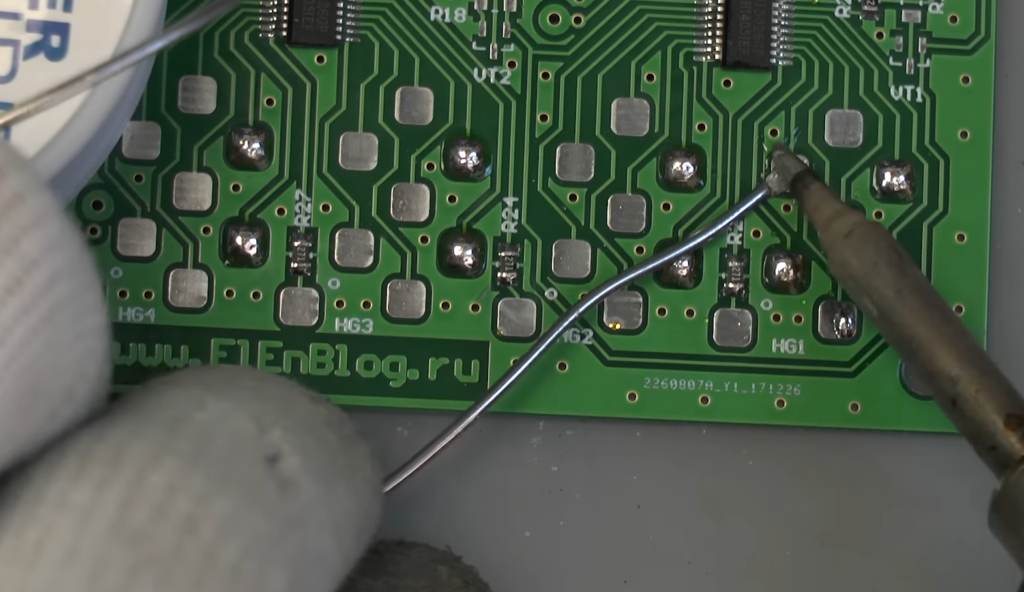
What is 63/37 Solder?
63/37 Solder is a popular eutectic solder alloy that is composed of 63% tin and 37% lead. Its low melting point of 183°C (361°F) and excellent workability have made it popular for electrical soldering since the 1800s. Compared to other solder alloys, 63/37 solder has both good wetting properties and very low resistance values when properly applied. It is ideal for use on printed circuit boards (PCBs) and components containing copper, gold, silver, nickel-plated surfaces, etc. [2]
Difference Between 60/40 Vs 63/37 Solder
When selecting solder, a key characteristic to consider is the alloy. Alloys are metals that have been combined with other elements in order to provide improved material properties such as strength and conductivity. In the case of soldering, an alloy made up of two different metals is used to create what is known as a “flux” which helps promote wetting between the components being soldered.
The most common alloys used for electronic soldering are 60/40 and 63/37 (commonly referred to as eutectic alloys). The numbers refer to the percentage of tin and lead respectively which make up these two particular compositions. Although both are capable of performing similar tasks, there are also some notable differences between the two.
The melting points of 60/40 solder and 63/37 solder are the main point of difference between them. The 60/40 alloy has a melting point of 190°C which is higher than the 63/37 melting point of 193°C. This means that the 63/37 will require less heat to melt, making it easier to work with but also more prone to thermal expansion when heated too quickly. On the other hand, the 60/40 will take longer to melt and require more time for it to achieve full wetting, but this also means that it is less likely to be affected by rapid heating or cooling cycles.
In terms of strength, both alloys are relatively similar with slight differences in the tensile strength of their final bond. The 63/37 solder has slightly higher strength than the 60/40, but not enough to make a significant difference when considering typical electronic soldering applications.
Overall, both 60/40 and 63/37 alloys are suitable for most electronic soldering needs and it really comes down to personal preference when selecting which one is best for you. If you need a fast-melting solder that is suitable for quick repairs then the 63/37 alloy may be your best bet. On the other hand, if you need a stronger and more reliable connection then the 60/40 might be a better choice due to its higher melting point. [3]
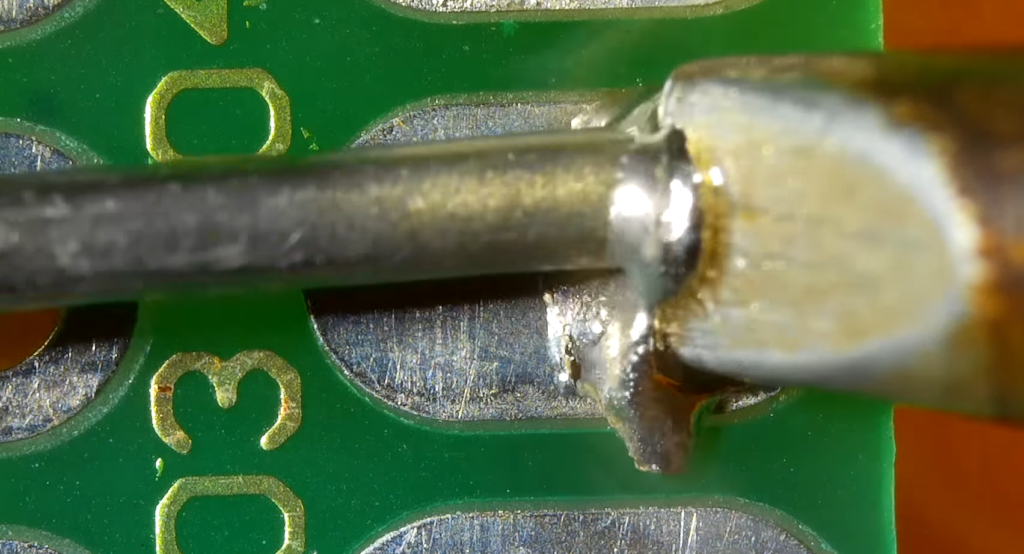
Working Principle Of Solder
Solder is a metal alloy material that is used to join two pieces of metal together by melting it and flowing it between the two surfaces. Solder typically has a low melting point, which allows it to flow smoothly at lower temperatures than other metals. The melting point of solder depends on its composition, with 63/37 solder generally having a higher melting point than 60/40 solder.
What Is The Function Of Flux And Rosin Core Solder?
Flux and rosin core solder are both used in soldering to facilitate the connection of two metals. Flux is a chemical compound that helps clean away oxidation from the metal surfaces so that they can be joined together by solder. Rosin core solder, on the other hand, contains flux within it, so it acts as an all-in-one solution for soldering projects.
Both flux and rosin core solder also help to reduce surface tension between the metals being connected which allows the molten solder to flow more easily into place. When selecting solder for a project it’s important to consider whether you need additional flux or if rosin core will do the job. If using 63/37 vs 60/40 Solder, the flux core is important to consider as 60/40 will require additional flux for proper soldering.

Overall, both flux and rosin core solder are essential components of any soldering project. They help create strong bonds between two metal surfaces by cleaning away oxidation and reducing surface tension. 63/37 vs 60/40 Solder should be chosen according to the specific needs of your project, taking into account the need for additional flux when using 60/40 Solder. When used properly, they can ensure a successful soldering job that stands up to long-term use.
Which Solder Is Ideal For Electronics?
The choice between 63/37 vs. 60/40 solder comes down to the specific application and the desired results. 63/37 solder is ideal for electronics that require greater strength and durability, as it forms a stronger bond compared to 60/40 solder. It’s also preferred for delicate electronic components because it melts at a lower temperature, which helps protect them from excessive heat damage during soldering.
On the other hand, 60/40 solder is well-suited for applications where flexibility and ease of use are important factors, such as plumbing or craft projects. It has a higher melting point than 63/37 solder and can easily be molded into shapes that can support heavier loads or secure more intricate structures. [4]
Ultimately, both types of solder provide excellent results when used properly. However, it’s important to be mindful of the specific requirements for each project and select the right solder to get the best results.
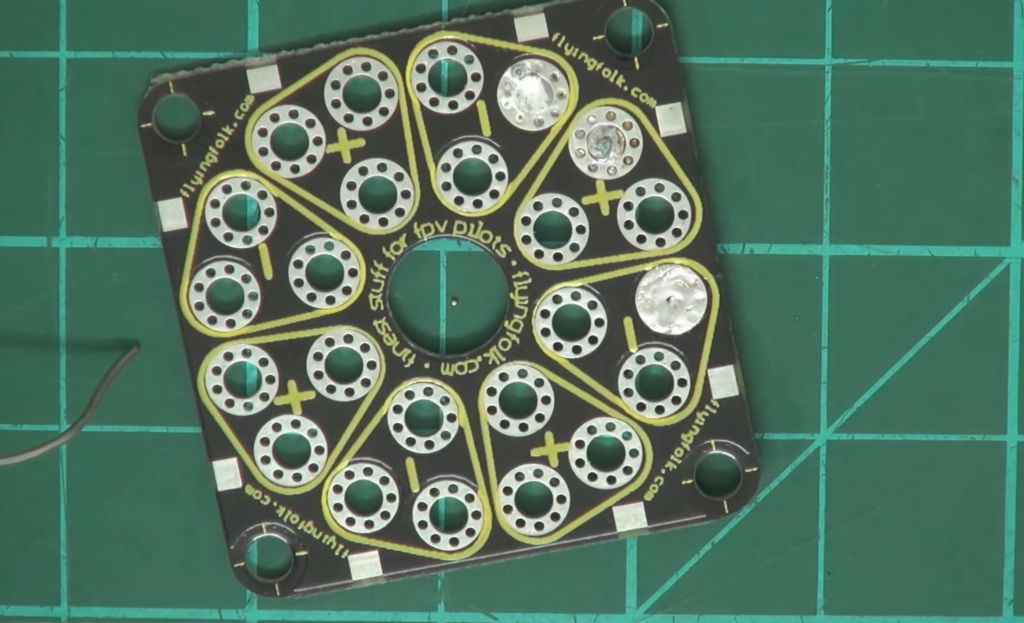
Pros and Cons of 63/37 Solder
The 63/37 solder has a number of advantages that make it the preferred choice for many applications. First, it melts at a lower temperature than most solders, making it ideal for delicate components such as surface mount devices (SMDs). It also has good electrical conductivity and wetting properties, helping to ensure reliable connections throughout the circuit.
On the downside, 63/37 solder is more brittle than other types of solder. This makes it less suitable for heavy-duty tasks such as large wire connections and holding heavier components in place. Additionally, because it does not contain lead, this type of solder may be difficult to work with compared to those containing lead. Finally, since this type of solder must be preheated before use, it may take longer to complete a soldering job.
Pros and Cons of 60/40 Solder
One of the most popular solders on the market, 60/40 Solder is a combination of tin and lead in a ratio of 60:40 respectively. It is often used for general-purpose applications because it has an easy melting point that works well with many metals. Some pros to using 60/40 solder include:
- Lower melting temperature – The tin-lead alloy melts at a lower temperature than other alloys, making it easier to work with for beginners or those who don’t have access to specialized equipment.
- Low cost – Because this type of solder is so popular, it is relatively inexpensive compared to other types of solders.
- Versatility – 60/40 solder can be used with a variety of metals and is especially useful for applications involving copper, brass, and aluminum. [5]
However, there are some cons to using 60/40 solder as well:
- Lead – As mentioned above, the tin-lead alloy contains lead which is toxic. Therefore this type of solder should not be used in confined spaces or around children.
- Poor wetting – 60/40 solder does not always “wet” surfaces as well as other types of solder due to the presence of lead in the alloy. This means that certain soldering processes may take longer than expected or result in an imperfect join.
- Lower strength – The lower melting temperature also results in a weaker bond and a lower strength joint compared to other types of solders.
Overall, 60/40 solder is an affordable, popular choice for many applications but it should be used with caution due to its lead content and weakened joint. When choosing a solder for an application, it’s important to consider the pros and cons of different types in order to make the best decision. [6]
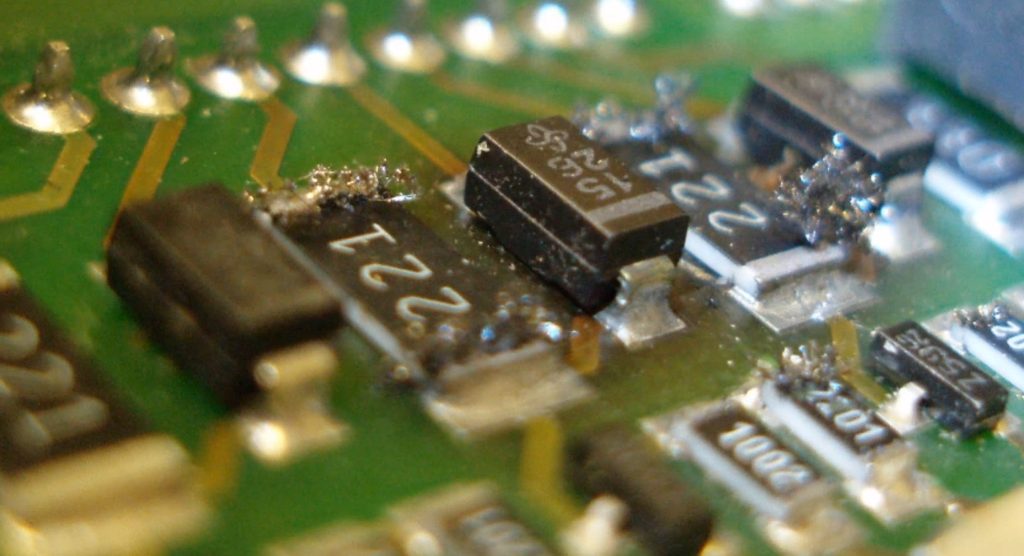
FAQ
What is 63/37 solder used for?
63/37 solder is used for electrical connections such as circuit boards, electronics, and other electrical components. It can also be used in jewelry making and plumbing applications. The 63/37 content of this solder ensures a strong bond between surfaces that need to stay together for extended periods of time.
What is the difference between 63/37 and 60/40 solders?
The main difference between these two types of solders is their lead content. 63/37 solder contains 63% tin and 37% lead, whereas 60/40 solder contains 60% tin and 40% lead. Since 60/40 solder has more lead than 63/37 solders, it melts at a lower temperature (183°C versus 188°C). Thi higher tin content of 63/37 makes it a better choice for electronics because it has better temperature resistance and corrosion protection.
Are there any advantages to using 60/40 solder?
Yes, the lower melting point of 60/40 solder can be beneficial for certain applications, such as wiring and plumbing. Due to its low melting temperature, it is also easier to use than 63/37 solder. Additionally, 60/40 solder is more economical than its counterpart due to its lower material cost.
What are the disadvantages of using either type of solder?
The main disadvantage with both types of solders is the presence of lead in them. Lead can be harmful if inhaled or ingested; therefore, proper safety equipment must be used when working with either type of solder. Furthermore, both 63/37 and 60/40 solders have a limited shelf life and should not be stored for longer than one year in order to maintain their effectiveness.
Is there an alternative to using lead-based solder?
Yes, lead-free solder is available as an eco-friendly alternative to traditional solders.
What is 60/40 solder used for?
60/40 solder is most commonly used for electrical applications, such as circuit board assembly and repair. It is also often used for plumbing applications, where the 60/40 combination of lead and tin creates a malleable joint between pipes that can resist corrosion and heat. Additionally, some folks use 60/40 solder for stained glass projects due to its ability to flow easily into crevices while still providing a strong bond. For these types of projects, it’s important to choose a flux-core or acid-core solder that will remain solid when heated but then liquify during the soldering process. Lastly, 60/40 solder is sometimes used to join metal components together in certain artistic or craft projects.
What temperature is 6/ 37 solder?
63/37 solder melts at a slightly higher temperature than 60/40 solder, usually around 375°F to 400°F (190°C to 205°C). For this reason, it is often used in more advanced or technical applications, such as in electronics manufacturing. When soldering with 63/37 solder, be sure to use a higher-temperature flux that will remain solid at the elevated temperatures required for melting the lead and tin alloy. Otherwise, you risk your joint becoming weak or even breaking due to inadequate fluxing during the soldering process.
Is 63/37 solder safe?
Although 63/37 solder is considered safe for most applications, it does contain lead. Therefore, in certain situations where lead-free soldering must be used—such as food and beverage production or medical device manufacturing—63/37 solder should not be employed. Additionally, if you’re working with electronics that will come into contact with a person’s skin or mucous membranes (e.g., headphones), the use of 63/37 solder may not be advised due to potential health risks associated with the presence of lead. Always check the safety guidelines applicable to your project before selecting solder for use.
Useful Video: What Type of Solder Should you use.
Conclusion
The two main types of solder are 63/37 and 60/40, which differ in their lead content. Each type has its advantages and disadvantages—63/37 is best for intricate soldering jobs, while 60/40 works better with large components. Both types are widely available from most electronics suppliers, so it’s easy to find the right kind for your project. With a little practice, you can learn the differences between these two solder types and use them effectively in any application. Ultimately, having the right knowledge about each solder type will help ensure a successful DIY or professional electronics project.
References
- https://www.raypcb.com/60_40-vs-63_37-solder/
- https://www.circuitsgallery.com/63-37-vs-60-40-solder/
- https://secondlifestorage.com/index.php?threads/choice-of-solder-63-37-vs-60-40.5926/
- https://en.wikibooks.org/wiki/Practical_Electronics/Soldering
- https://www.helifreak.com/showthread.php?t=604405
- https://neurochrome.com/pages/choosing-solder














Leave a Reply